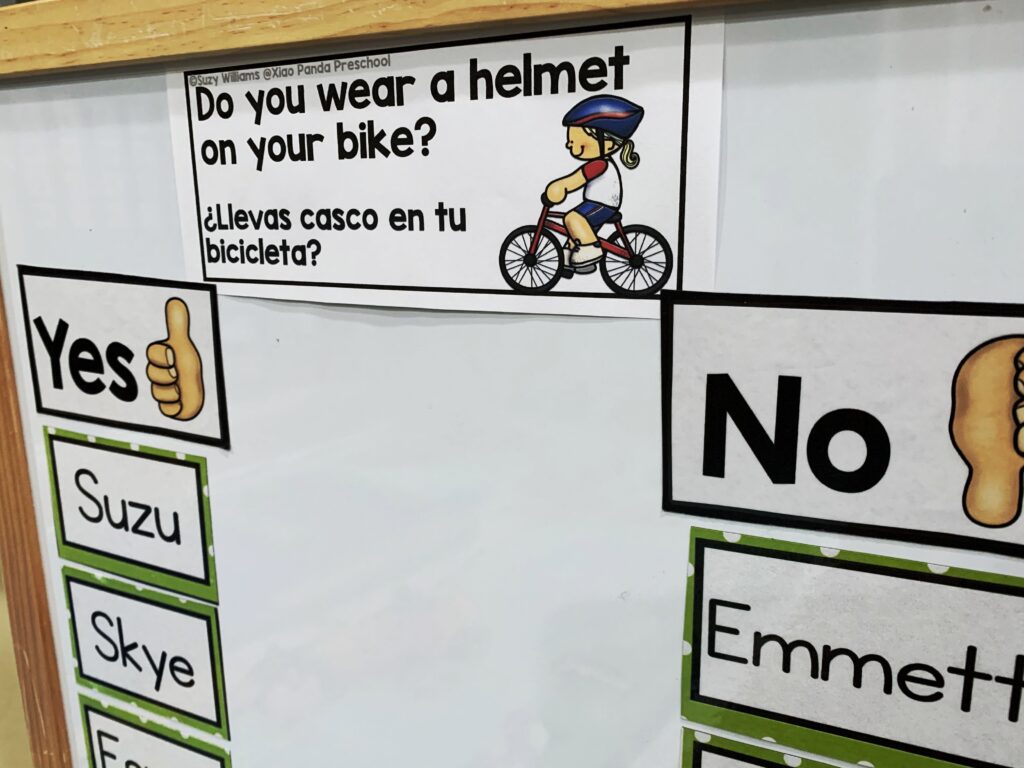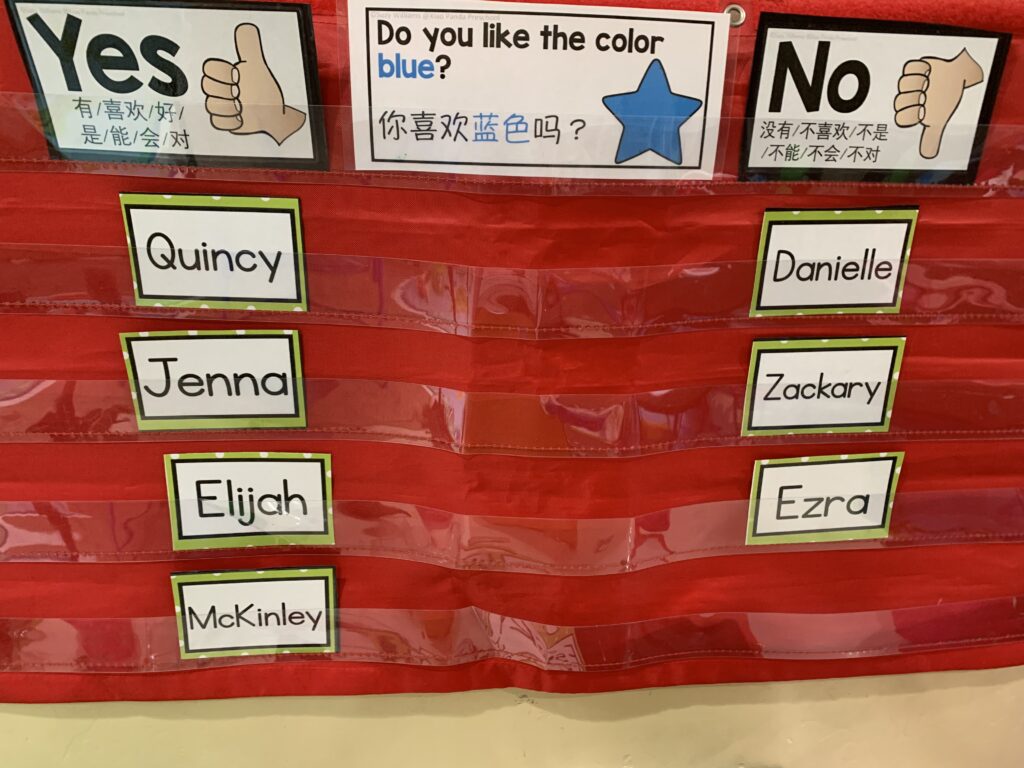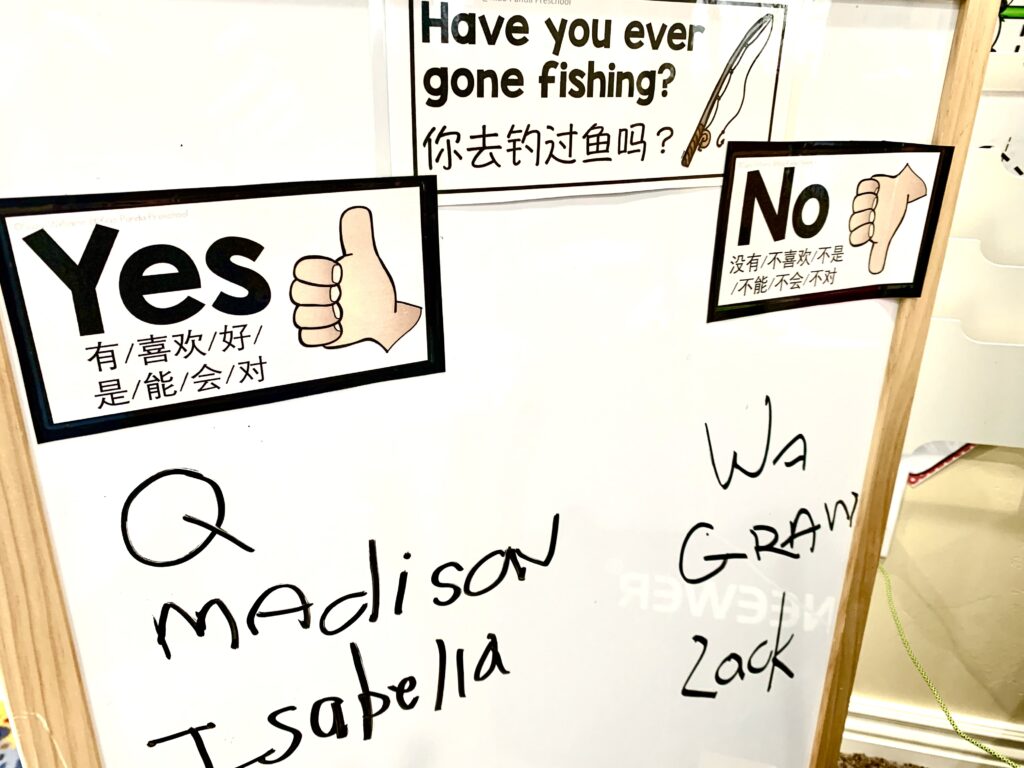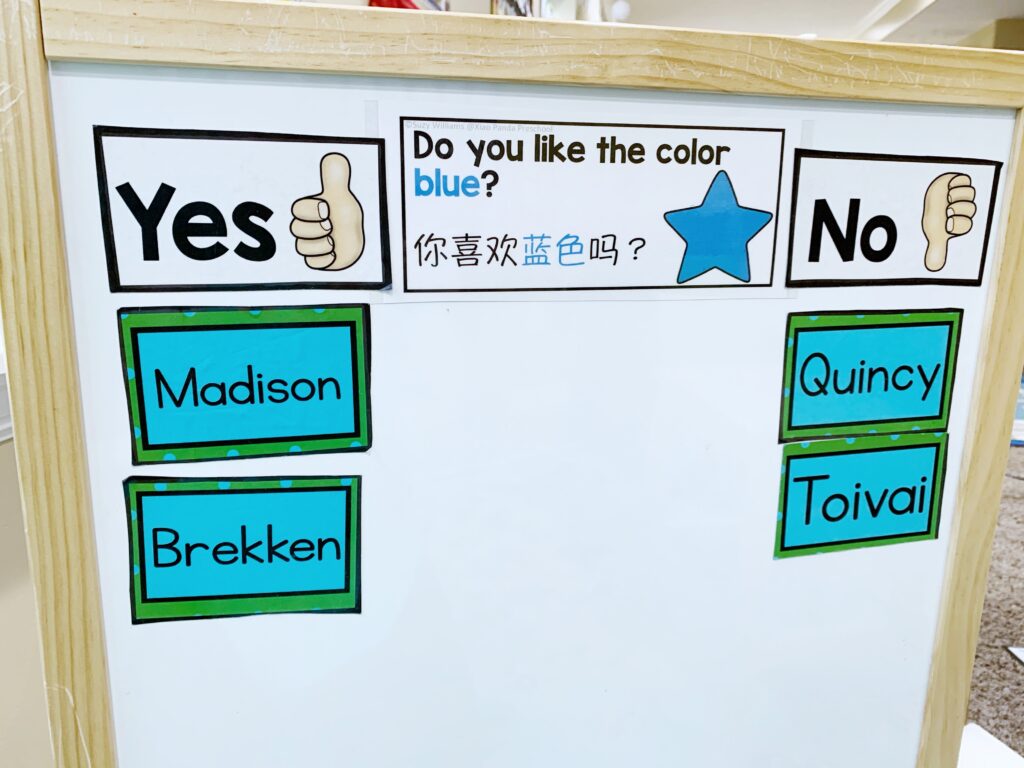As educators, we are always looking for creative ways to engage our preschool students and promote their cognitive and linguistic development. One effective method is through the use of a preschool question of the day. This daily routine provides a structured opportunity for children to think critically, share their thoughts and ideas, and build language skills. In this blog post, we’ll explore the benefits of incorporating a preschool question of the day into your classroom routine, and highlight a valuable resource that offers 300 bilingual English and Spanish questions to use with your students.
This post may contain affiliate links for which I may receive a small commission at no extra cost to you. I also so appreciate your support by using my links. Thank you.
If you’re interested in the 300 Questions of the Day I have created, I have them in Here with bilingual Spanish and Here with Bilingual Chinese.

What is a Question of the Day and Why Use It in Preschool?
A Question of the Day is a simple but effective tool used in preschool classrooms to stimulate children’s curiosity and encourage critical thinking skills. It involves posing a thought-provoking question to students at the start of each day or class session. These questions are often open-ended and designed to spark discussion and promote problem-solving.
Using a Question of the Day list in your classroom can help you achieve a range of important educational goals. For example, daily questions can help to foster language development, build social-emotional skills, and enhance overall cognitive development in young children. Asking open-ended questions can also promote creativity and imaginative thinking in preschoolers.
In addition to the benefits of cognitive and emotional development, a daily Question of the Day routine can also help young learners build valuable communication and listening skills. It can create a supportive learning environment where students feel comfortable sharing their thoughts and opinions with others.
In short, using a daily question routine is an effective and fun way to promote early childhood development and create a dynamic learning environment for your preschool students.
If you’re interested in the 300 Questions of the Day I have created, I have them in Here with bilingual Spanish and Here with Bilingual Chinese.


Benefits of Using a Daily Question in the Preschool Classroom
Using a question of the day in your preschool classroom can provide a number of benefits for both you and your students. Here are some of the most important benefits:
- Builds Community and Connection
By starting each day with a question that encourages children to share their thoughts and ideas, you create a sense of community and connection in your classroom. Students learn to listen to each other and respect each other’s opinions, which can help foster positive relationships and a sense of belonging. - Develops Language and Communication Skills
As children share their answers to the daily question, they are practicing their language and communication skills. They learn how to express themselves clearly, use vocabulary words, and engage in conversation with others. This is especially important for young English Language Learners, who may benefit from the daily exposure to English. - Encourages Critical Thinking and Problem-Solving
Questions of the day are designed to be open-ended, which means that there are no right or wrong answers. This encourages children to think creatively and critically as they come up with their responses. They learn to analyze and evaluate information, which are important skills that will serve them well in all areas of their lives. - Helps Develop Confidence and Self-Esteem
When children share their thoughts and ideas in front of their peers, they gain confidence in themselves and their abilities. They also learn to appreciate and respect their own unique perspectives and ideas, which can help boost self-esteem.
Using a question of the day list in your preschool classroom can be a simple yet powerful tool to promote learning and social-emotional development. The benefits are clear, so why not give it a try?
If you’re interested in the 300 Questions of the Day I have created, I have them in Here with bilingual Spanish and Here with Bilingual Chinese.
Research Supporting the Use of Questions in Early Childhood Education
Numerous studies have shown the positive impact of using questions in early childhood education, particularly in preschool classrooms. In fact, using a question of the day list has become a popular tool for teachers to engage young learners and promote their cognitive and language development.
Research suggests that asking open-ended questions, which do not have a specific correct answer, can foster children’s critical thinking skills and encourage them to explore different ideas. Additionally, answering questions can help preschoolers build their vocabulary and improve their ability to communicate effectively with others.
Furthermore, the use of daily questions in the classroom can create a sense of routine and structure for young learners. It gives them a predictable pattern of expectations, which can help reduce anxiety and increase participation.
Overall, incorporating a question of the day into your preschool curriculum can be a powerful tool for supporting your students’ learning and development. So why not give it a try and see how it can benefit your young learners?

If you’re interested in the 300 Questions of the Day I have created, I have them in Here with bilingual Spanish and Here with Bilingual Chinese.
How to Incorporate a Daily Question Routine into Your Preschool Curriculum
Now that we’ve discussed the benefits of using a daily question in the preschool classroom, let’s talk about how to incorporate it into your curriculum. Here are some tips and ideas:
- Make it a part of your morning routine. This could be the first thing you do each morning, after the children arrive and get settled.
- Use a large chart or poster board to display the question each day. Make it colorful and engaging, with pictures and illustrations.
- Choose questions that are age-appropriate and relevant to your students’ lives and experiences. You could ask about favorite foods, colors, animals, hobbies, or family members, for example.
- Encourage children to share their answers with the group. You could ask them to raise their hand, or go around the circle and have each child share their answer.
- Use the question as a starting point for further exploration and discussion. You could follow up with related activities or lessons throughout the day or week.
- Provide opportunities for children to ask their own questions, too. Encourage curiosity and inquiry by welcoming their ideas and observations.
- Keep it fun and playful! Remember that young children learn best through play and exploration. Use humor, storytelling, and games to make the daily question a highlight of their day.
Using a daily question in your preschool curriculum can be a simple but powerful way to promote language development, critical thinking skills, and social-emotional learning. With a little planning and creativity, you can make this a fun and engaging part of your daily routine.
Using Bilingual Questions in the Classroom: Tips and Best Practices
In today’s diverse classroom, it’s important to consider using bilingual questions to make your Question of the Day routine more inclusive and engaging for all students. Here are some tips and best practices for using bilingual questions in your preschool classroom:
- Choose a mix of English and Spanish or English and Chinese questions.
Consider your classroom’s language needs and make sure you have a good mix of English and Spanish questions to provide a well-rounded experience for all students. If you’re interested in the 300 Questions of the Day I have created, I have them in Here with bilingual Spanish and Here with Bilingual Chinese. - Keep it simple.
When using bilingual questions, it’s important to keep the vocabulary simple and age-appropriate. This way, students of all language levels can participate and understand the question. - Provide visual aids.
To aid in comprehension, use visual aids such as pictures, illustrations, and props to help students understand the question. - Encourage students to use both languages.
Encourage students to answer the question in the language of their choice. This allows for individual expression and fosters a language-rich environment. - Incorporate cultural awareness.
When using bilingual questions, consider incorporating cultural awareness by asking questions about students’ cultures or traditions. This not only supports cultural understanding but also fosters a sense of community and belonging.
Incorporating bilingual questions in your Question of the Day routine can help to create an inclusive and engaging environment for all students in your preschool classroom. Consider trying out some of these tips and best practices to enhance your daily routine.
Conclusion
Overall, incorporating a daily question of the day into your preschool curriculum can have numerous benefits for your young learners. It provides an opportunity for children to engage in conversation, critical thinking, and language development. Furthermore, research supports the use of questions in early childhood education as a way to promote social-emotional development and enhance academic outcomes.
Using a bilingual question of the day can also benefit language learners and help create a more inclusive classroom environment. Remember to keep your questions age-appropriate and relevant to your students’ interests and experiences.
By using the 300 questions available in our bilingual product, you can easily incorporate a daily question routine into your preschool classroom. It’s a simple yet effective way to enhance your students’ learning experience and create a positive classroom community. Give it a try and see the benefits for yourself!
